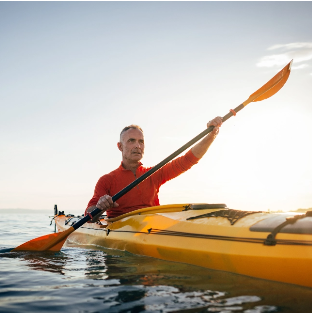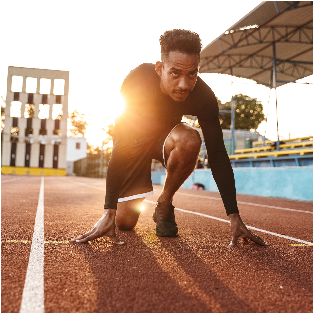Scoliosis is a condition that affects millions of people worldwide, characterized by an abnormal curvature of the spine. For many individuals with scoliosis, the journey often leads to exploring surgical options when conservative treatments no longer suffice. This article delves into the key aspects of scoliosis surgery, particularly focusing on scarring concerns, long-term effects, and the expertise of Dr. Jeremy Smith, a renowned spine surgeon based in Orange County, California.
Scoliosis Surgery Scar: What to Expect
Around seven million individuals experience varying degrees of curvature in their spine, with approximately 4 percent of children affected by scoliosis. This condition manifests as an atypical curvature of the spine, forming a distinctive "C" or "S" shape, sometimes accompanied by protrusion of ribs from the side of the body. Detection often occurs during routine physical examinations conducted by healthcare professionals such as pediatricians, chiropractors, or school nurses, prompting further evaluation through X-rays to confirm the spinal curvature. Early-stage treatment is imperative for all cases of scoliosis, involving prescribed scoliosis exercises tailored to the individual's specific curve pattern.
Medical guidelines typically recommend monitoring for spinal curves less than 25 degrees, with check-ups every 4 to 6 months to assess progression. Treatment may commence with scoliosis bracing for curves between 25 and 40 degrees, aimed at preventing worsening but not correcting the curvature, particularly ineffective for adult scoliosis. In some cases, bracing may extend to curves up to 45 degrees. Surgical intervention is considered a last resort for curves exceeding 40 degrees or those anticipated to progress beyond 50 degrees, although evidence supporting surgery's efficacy is limited, except for severe cases over 110 degrees where lung complications may arise.
Does Scoliosis Surgery Leave a Scar?
One of the primary concerns for individuals considering scoliosis surgery is the potential scarring. Dr. Jeremy Smith employs advanced surgical techniques aimed at minimizing scarring. Typically, scoliosis surgery involves making one long incision along the spine, which results in a scar. However, this scar is strategically placed and often fades significantly over time. Dr. Smith's expertise ensures that scarring is kept to a minimum, with a focus on achieving optimal cosmetic outcomes for patients.
Body Changes After Scoliosis Surgery
Scoliosis surgery can bring about noticeable changes in the body, especially in terms of posture and spinal alignment. Patients often experience improved balance and reduced spinal curvature post-surgery, leading to better overall body alignment. This can alleviate pain and enhance mobility, allowing patients to engage in activities they may have struggled with before surgery. Dr. Smith's comprehensive approach to scoliosis surgery ensures that patients achieve the best possible functional and aesthetic results.
Size of Scar from Scoliosis Surgery
The size of the scar resulting from scoliosis surgery can vary depending on factors such as the surgical approach used and the extent of correction required. Dr. Jeremy Smith employs minimally invasive techniques whenever possible to minimize scarring and promote faster recovery. The size of the scar is typically proportional to the length of the incision needed to access the spine. In most cases, once healed, scars from scoliosis surgery are discrete and can be easily concealed under clothing.
Long-term Effects of Scoliosis Surgery
Many patients are understandably curious about the long-term impacts of scoliosis surgery and how it will affect their quality of life as they age. While surgery can indeed correct spinal curvature and significantly improve overall well-being, it's crucial to delve deeper into the specific impacts and considerations for patients in the years following the procedure.
Improved Mobility and Functionality
Scoliosis surgery often leads to improved mobility and functionality for patients. By correcting spinal curvature and aligning the spine more effectively, individuals experience reduced pain and discomfort, allowing them to engage in daily activities with greater ease and comfort. This improved functionality contributes to a better quality of life and increased independence as patients navigate their adult years.
Maintenance of Spinal Stability
Dr. Jeremy Smith emphasizes the importance of post-surgery rehabilitation and regular check-ups to ensure the spine remains stable and healthy in the long term. This proactive approach helps prevent potential complications and ensures that the surgical corrections made during the procedure remain effective over time. With proper care and monitoring, patients can maintain spinal stability and avoid issues such as recurrent curvature or spinal misalignment.
Enhanced Respiratory Function
In severe cases of scoliosis where the curvature significantly impacts lung function, surgery can lead to improvements in respiratory function. By optimizing spinal alignment and reducing compression on the lungs, patients may experience enhanced breathing capacity and overall respiratory health. This is particularly beneficial as individuals age and may face other age-related respiratory challenges.
Psychological Well-being
Addressing scoliosis through surgery can have a positive impact on patients' psychological well-being. Correcting visible spinal deformities can boost self-confidence and body image, leading to improved mental health outcomes. This psychological boost can be especially important as patients transition into adulthood and navigate various social and professional environments.
Long-term Monitoring and Care
It's important to note that scoliosis surgery is not a one-time fix but rather part of a comprehensive treatment plan. Regular follow-up appointments with healthcare providers, including orthopedic specialists, physical therapists, and respiratory therapists, are essential for ongoing monitoring and maintenance. These appointments allow for adjustments in care as needed and ensure that any potential issues are addressed promptly to preserve the benefits of surgery throughout a patient's adult years.
In conclusion, while scoliosis surgery can indeed provide lasting benefits and improve quality of life, it's essential for patients to commit to long-term care and monitoring to maximize the positive impacts of the procedure well into their adult years. With proper rehabilitation, regular check-ups, and a proactive approach to spinal health, patients can enjoy the lasting benefits of scoliosis surgery and lead fulfilling lives.
Success Rate of Scoliosis Surgery
The success rate of scoliosis surgery is generally high, particularly when performed by experienced surgeons like Dr. Jeremy Smith. Factors such as the severity of the curvature, patient age, and overall health can influence outcomes. However, advancements in surgical techniques and technology have significantly improved success rates and reduced complications associated with scoliosis surgery. Dr. Smith's track record of successful outcomes speaks to his expertise in delivering effective and safe surgical interventions for scoliosis patients.
Permanent Restrictions After Scoliosis Surgery:
Scoliosis surgery offers significant improvements in quality of life, but it's important to address potential concerns regarding scarring. While scoliosis surgery involves making incisions along the spine, resulting in scars, advancements in surgical techniques have minimized scarring considerably. Dr. Jeremy Smith employs meticulous surgical approaches aimed at achieving optimal cosmetic outcomes for patients.
Despite the presence of scars, most patients can resume normal daily activities post-surgery, including exercise and recreational pursuits. However, there may be permanent restrictions or considerations to ensure the spine's long-term health. For instance, high-impact activities like contact sports are often discouraged to protect the spine and surgical site. Dr. Smith provides personalized guidance, considering each patient's specific needs and lifestyle preferences when recommending post-surgery activities.
With proper recovery, rehabilitation, and adherence to personalized guidance, patients can enjoy improved spinal alignment and functionality without significant limitations due to scarring. Dr. Smith's expertise in minimizing scarring and optimizing post-surgery care contributes to positive outcomes and enhanced quality of life for scoliosis surgery patients.
Expertise of Dr. Jeremy Smith
Dr. Jeremy Smith is a highly skilled and experienced spinal surgeon with a focus on scoliosis interventions. His expertise encompasses both traditional and minimally invasive surgical approaches, allowing him to tailor treatment plans to each patient's unique condition and goals. Dr. Smith's commitment to patient care, coupled with his advanced surgical techniques, ensures optimal outcomes and patient satisfaction.
In conclusion, navigating scoliosis surgery involves understanding the potential impact on scarring, long-term effects, and the expertise of the surgeon. Dr. Jeremy Smith's approach emphasizes minimizing scarring, achieving functional and aesthetic improvements, and providing comprehensive post-surgery care for lasting benefits. If you or a loved one is considering scoliosis surgery in Orange County, California, consulting with Dr. Smith can be the first step towards a more aligned and fulfilling life.
FAQs (Frequently Asked Questions)
How long does it take for scoliosis surgery scars to heal?
The healing process for scoliosis surgery scars can vary from person to person. Initially, the scar may appear red, raised, and slightly swollen. Over time, typically within the first year after surgery, the scar will start to fade and flatten. However, complete healing and optimal scar appearance may take up to 18-24 months in some cases. It's important to follow proper wound care instructions provided by your healthcare provider to promote optimal healing.
Can scoliosis surgery scars be completely eliminated?
While scars from scoliosis surgery may never completely disappear, they can significantly improve in appearance over time. Factors such as the surgical technique used, individual healing ability, avoidance of sun exposure, and scar management strategies can influence the final appearance of the scar. Various treatments, including silicone-based gels, sheets, laser therapy, and microneedling, can help minimize scar visibility and texture. It's essential to discuss your concerns and options with your healthcare provider to determine the best approach for improving the appearance of your scar.
Are there any risks associated with scar management treatments?
Yes, some scar management treatments carry potential risks and side effects. For example, silicone-based products may cause skin irritation or allergic reactions in some individuals. Laser therapy can lead to temporary redness, swelling, or changes in pigmentation. Microneedling may cause minor discomfort or temporary bruising. It's crucial to undergo these treatments under the guidance of a qualified healthcare professional who can assess your skin type, medical history, and potential risks before proceeding with scar management techniques. Always follow the recommended guidelines and precautions provided by your healthcare provider to minimize any adverse effects.
Do scars from scoliosis surgery affect mobility?
In most cases, scoliosis surgery scars do not directly impact skin mobility once the healing process is complete and rehabilitation is done. The surgical incisions are typically made on the back and are positioned strategically to minimize interference with movement. However, during the initial recovery period, there may be some discomfort or stiffness around the scar area, which can temporarily affect mobility. Physical therapy and rehabilitation exercises prescribed by your healthcare provider are essential for restoring strength, flexibility, and mobility after surgery. It's crucial to follow the recommended rehabilitation plan and communicate any concerns about mobility with your healthcare team.
Is scar anxiety common among scoliosis surgery patients?
Scar anxiety can be a common emotional response among scoliosis surgery patients and individuals undergoing any type of surgery that results in visible scars. It's natural to feel self-conscious or concerned about how the scar will look and how others may perceive it. However, with proper support, education, and coping strategies, many patients can overcome scar anxiety and develop a positive mindset towards their scars. Seeking support from healthcare professionals, joining support groups, practicing self-care, and focusing on the overall benefits of surgery in improving quality of life can help individuals embrace their scars as symbols of strength and resilience.
Are there any specific exercises or activities that can help minimize scoliosis surgery scars?
While gentle stretching and low-impact exercises may promote healing and improve flexibility, it's crucial to consult with a healthcare provider or physical therapist before starting any new exercise regimen post-surgery.
Do scoliosis surgery scars affect clothing choices or daily activities?
In some cases, scoliosis surgery scars may limit certain clothing choices, especially tight or restrictive clothing. However, with time and proper scar care, most patients can resume their normal daily activities without significant interference.
What role does age play in scar formation after scoliosis surgery?
Younger patients, particularly adolescents, may experience faster healing and better scar outcomes compared to older individuals. However, individual healing factors and scar management techniques also play significant roles.
Can scoliosis surgery scars cause long-term discomfort or pain?
While discomfort and sensitivity around the scar area are common during the initial healing phase, long-term pain or discomfort is rare. If persistent pain occurs, it's important to consult with a healthcare provider for further evaluation and management.

















